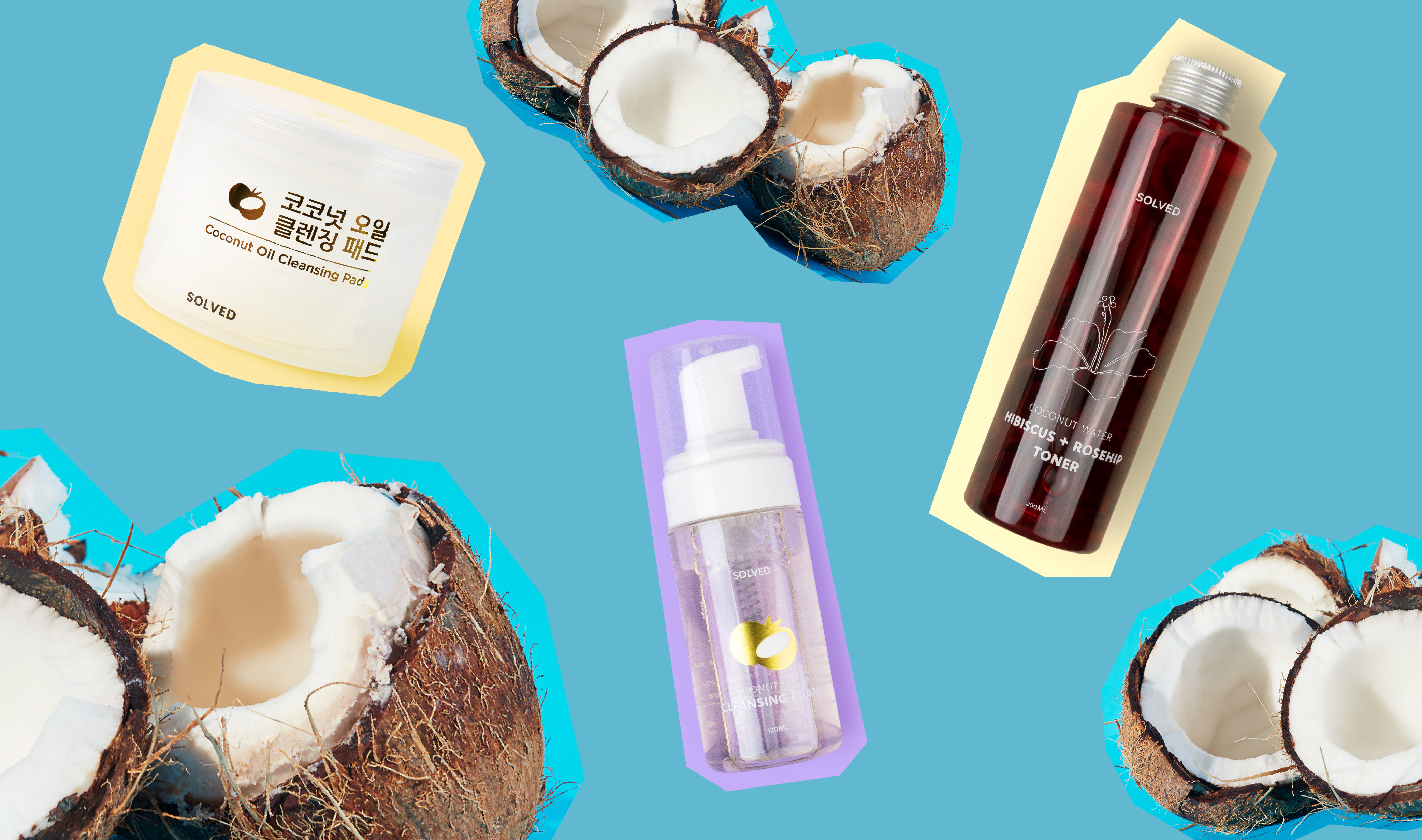Coconuts not only add a sweet-smelling fragrance to skin care products, but are also hydrating superstars. With expert insight, we’re highlighting the many benefits that coconuts can have on the skin.
The fruit of the tropics – coconuts – have proven to be an excellent moisturizer to treat dry skin and even dry hair. In fact, there are many products now on the market that include this fruit’s fragrance in their ingredient rosters. We’re taking you on a deep dive to understand its benefits, along with product recommendations if you’re looking to include more hydration in your skin care routine.
The benefits of coconut
Coconuts are known for their hydrating properties, but why do they make great hydrators?
“Found in products from hair care to skin care, this ingredient primarily serves as a moisturizing agent. Mostly in the form of oil, coconuts have a wide range of benefits. Coconut oil is rich in fatty acids, making it a great hydrator. Some of the fatty acids also include antimicrobial properties which can help to fight skin infections and harmful microorganisms,” says esthetician Josie Holmes of Skinney Medspa.
Esthetician Airi Williams of Los Angeles-based facial spa, Skin Camp, the sister brand of beauty tools company, Skin Gym, adds that coconuts are also rich in fatty acids and in vitamins E and A.
“[They] primarily [are made up of] fatty acids. [They do] have some antioxidant properties like vitamin E and vitamin A to help with collagen production and moisture. Mixing several vitamins in the skin will help improve the skin’s overall health,” Williams says.
The list goes on and on regarding the benefits coconuts serve, including alleviating irritation caused by specific skin concerns.
“Coconut Oil has anti-inflammatory properties that can assist in treating inflammatory skin concerns such as eczema, psoriasis, and irritated skin. As coconut oil is rich in fatty acids – making it a great moisturizing agent – it can assist in wound healing by helping to protect the outer layer of the skin, keeping out bacteria, and maintaining the skin’s health,” says Holmes.
Who benefits from coconuts?
Since they are known for adding moisture to the skin, NYC-based dermatologist Dr. Hadley King advises dry skin types in particular should try products that consist of coconut.
“Dry hair and skin types, therefore, can benefit most from the excellent emollient properties of coconut oil. Its emollient properties make it helpful for moisturizing dry skin, decreasing frizz and fly-aways and increasing luster,” she says.
According to Holmes, using topical products containing coconut can also improve the health and efficaciousness of the skin barrier. “Dry skin is [caused by] a lack of oil, therefore adding an oil into your routine can help to restore the lipid barrier, increase water retention, and help to nourish the skin,” explains Holmes.
While coconut oil can help many with skin concerns related to dryness, coconut is not a “one size fits all” type of ingredient. Coconut can cause the onset of acne for other skin types, particularly for oily and acne-prone skin.
“However, coconut oil is fairly comedogenic, meaning that it can clog pores and contribute to acne. Therefore, if you have oily skin and are acne-prone, then coconut oil should not be applied to acne-prone areas,” explains Dr. King.
RELATED: Is Coconut Oil Good for Your Skin?
Product Recommendations
From makeup removal to evening out the skin’s texture, there are several K-Beauty brands that utilize coconut within its formulations.
Leaders 7 Wonders Tundra Cranberry Anti-Aging Mask: Coated in coconut gel, this sheet mask hydrates and combats free radicals using cranberries from the arctic. The cranberries specifically address fine lines, wrinkles, and skin elasticity, while the coconut gel helps to effectively lock in hydration to the skin.
Solved Skincare Coconut Oil Cleansing Pads: If you’re looking for a hassle-free solution to removing makeup and SPF at the end of the day while taking in the aroma of 100% virgin, non-comedogenic coconut oil, consider trying Solved Skincare’s Coconut Oil Cleansing Pads. These soft pads also serve as gentle exfoliators, freeing the skins’ surface of dirt and oil. Did we also mention that the coconut oil hydrates and smoothes out the skin’s texture, too?
Solved Skincare Coconut Water Cleansing Foam: Considering having a full-on coconut cleansing routine? Enter Solved Skincare’s Coconut Water Cleansing Foam. Consisting of 75% coconut water, this cleanser helps in washing away pollutants and other residue on the surface of the skin. With a pH level of 5.5, this cleanser is also friendly to sensitive and dry skin types.
Solved Skincare Coconut Water Hibiscus + Rosehip Toner: Infused with coconut water, hibiscus leaves, and rosehip extract, this toner leaves your skin feeling hydrated and rejuvenated. Coconut water helps nourish the skin and fight signs of aging, while the hibiscus leaves help regenerate the skin. As an added bonus, this multi-functional toner is suitable for all skin types, including oily and acne prone skin.

















